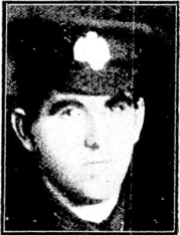Weaver Close, Alexandra NZ. Location: 45.241539,169.378440
Sergeant John Weaver 9/461. Distinguished Conduct Medal, Victory Medal, British War Medal 1914 -1920 & Meritorious Service Medal. New Zealand Expeditionary Force (WW1).

A fruit grower from Clyde, in August 1914 at the outbreak of war John (24/08/1891 – 06/06/1945) volunteered for service in the Otago Mounted Rifles. After basic training, on the 22nd September John was shipped abroad with the rest of the first wave of volunteers, the ‘main body’ men. First to Egypt for acclimatisation for both man and horse, then on to Gallipoli minus their horses in May 1915, as the Allied losses exponentially increased.
On the 29th of July 1915, Trooper Weaver suffered a gunshot wound to his hand while stationed in the front line trenches of No 2 outpost on Walkers Ridge. He was subsequently evacuated from ANZAC Cove, and taken to the NZ General Hospital in Cairo.
Rejoining his unit on the 13th November, Trooper Weaver served on the front line during the rest of the doomed campaign, finally arriving back in Egypt on the 25th of December.

In early 1916, the war weary units were rested and reinforced by arriving replacements, then formed into the New Zealand Division for service on the Western Front. The Otagos, by now severely understrength were compressed into a single squadron (1st OMR) and attached to the departing NZ Division.
Again the 1st OMR troopers found themselves forced into different roles than originally intended, shaped by the nature of the unfolding conflict. They were soldiers who had a specialist skill set. They were highly mobile with the ability to fight on foot
or horseback, and reconnoitre enemy positions in the vanguard of an advance. At Gallipoli the rugged landscape and trench warfare prevented this. Again, upon their arrival in France the 1st OMR now found itself enmeshed in the gridlock of trench warfare.
The 1st OMR saw little involvement in the major Western Front battles of 1916, as the need for their speciality never eventuated. As historian Don Mackay observed “the primary {task undertaken} was as footslogging work parties under engineer supervision” (p. 214).
Consequently, men were transferred away to fulfil other much needed roles, and on the 19th of July that year Trooper Weaver became Private Weaver of the NZ Field Artillery.
However, it wasn’t long before Private Weaver found a way back to his preferred unit; records show that on the 10th of September, he was once again a trooper in the 1st OMR. Promotion soon followed: Lance Corporal 18/09/16, Corporal 23/04/17, then to Sergeant on the 25/12/17.
On the 2nd of June 1918, Sergeant Weaver was on a temporary attachment to the NZ Division Headquarters, when on the 17th of that month he was awarded the Meritorious Service Medal “in recognition of valuable services rendered with the Forces in France during the present war” (Archives NZ, Correspondence dated 25/08/20).
Meanwhile, the nature of warfare was changing as the Allies sought a way to break the deadly static of trench warfare. The battle of Messines Ridge in June 1917, was a turning point that saw the 1st OMR take a more aggressive stance: that of mounted reconnoitring of enemy positions. This role was to become more prevalent in the successful Allied advances of July to November 1918, known as the ‘hundred days to victory’.
On the 8th of November, Sergeant Weaver was on patrol some 10 miles south of Mons, in the vicinity of Les Trois Maisons Farm, when his
patrol was fired on by several concealed machine guns. Weaver promptly asked his men to act as observers while he acted as decoy by galloping into the open across a nearby ridgeline. Five gun positions which fired at Weaver were located and effectively engaged by artillery (Mackay, p. 245).
This brave act became the main reason for his subsequent recommendation and receipt of the Distinguished Conduct Medal (DCM) for ‘Gallant Conduct’; as recorded in red ink on his Statement of the Services form. However, Sergeant Weaver wasn’t done yet:
Later in the day, pressing on through Aulnois, enemy guns again held up his patrol. Weaver galloped on alone towards La Sablonniere. This time he and his horse were shot. Severely wounded in the thigh and buttock, Weaver was only saved from being bayoneted as he lay on the ground by the arrival of a German officer who called off his men and retired, leaving Weaver in the care of the local inhabitants. When the remainder of his patrol arrived, he sent back a comprehensive report on the enemy’s situation (Mackay p. 245).
A remarkable act of courage, and luck as Sergeant Weaver had stared death in the face and only survived by the grace of his enemy’s compassion. Two days later the armistice was signed.
Unfortunately the severity of his injuries led to being declared unfit for further service. Boarding the Troopship Maheno on the 12th of March 1919, Sgt Weaver began his long journey home. He had served four years and one hundred and eighty nine days overseas. He eventually became a farmer in the Dunedin district.
QR Code for this webpage




